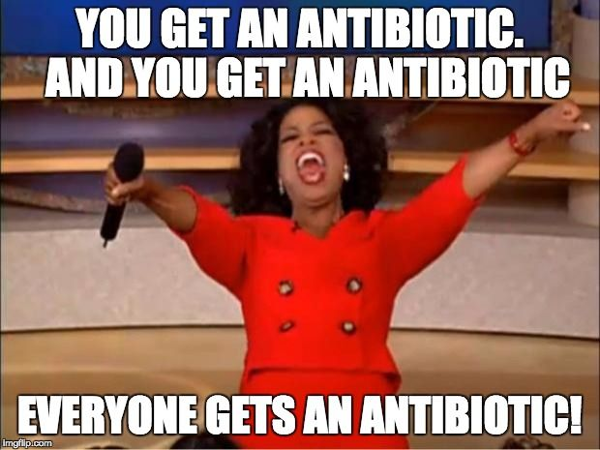Prior to the widespread development and use of antibiotics, some bacterial infections, such as bacterial endocarditis and meningitis, were almost uniformly fatal. The leading causes of death in 1900 were infections: pneumonia, TB and diarrhoea/enteritis. While sulphur antibiotics were developed first, the discovery of penicillin in 1928 lead to its widespread use by the 1940’s, resulting in a significant change in epidemiology of disease throughout the 20th century with a sharp drop in infant and child mortality and a near 30 year increase in life expectancy by the late 1990’s.
Resistance to antibiotics has occurred for every antibiotic agent that has ever been used. Antibiotic resistance is not a man-made phenomenon but rather a reflection of natural selection and evolution; widespread antibiotic use, however has led to the rapid emergence of resistance bacteria.
There are concerns that we have entered into the ‘post-antibiotic era’. Antibiotic resistance leads to the loss of effective antibiotics and hence undermines our ability to treat or manage infections or infectious complications; this in turn leads to the use of antibiotics that are potentially more toxic, less effective or more expensive. Patients with resistant infections are more likely to die, experience longer hospital stays and have delayed recuperation.
It has been estimated that by 2050, more people will die of resistant organisms than cancer. Some of the significant contributors to the development of antibiotic resistance include: overuse of antibiotics, inappropriate prescribing, extensive use of antibiotics in agriculture and livestock and a lack of new antibiotics being developed.
Suboptimal antibiotic prescribing has been shown to occur in both the community and hospital setting with previous antibiotic surveys finding that >20% of prescriptions in hospitals are non-compliant with guidelines and >20% considered to be inappropriate prescriptions.
Reducing antibiotic resistance can be achieved by vaccination, improving prescribing practices, antimicrobial stewardship programs, improving diagnosis and diagnostic tools, prevention of transmission of bacterial infections and the development of new and novel antimicrobials.
We can improve our prescribing practices by using antibiotics less and using them more prudently; specifically, using the narrowest-spectrum agent where possible, treat infection – not contamination or colonisation, and following the Australian Therapeutic Guidelines.
Specific things we can do to improve our prescribing include: not treating asymptomatic bacteriuria as this does not reduce the development of symptomatic UTI’s or their complications and results in a higher prevalence of antibiotic resistant strains (shown in women with UTI’s).
Community acquired pneumonia is over-diagnosed frequently leading to unnecessary antibiotics – which are often too broad or given for too long; recent evidence suggests that treating for 5 days of antibiotics is just as effective as more prolonged courses.
Overall, shorter courses of antibiotics are better – all randomised controlled trials comparing short with longer course therapy has found short courses just as effective. Further reading on his topic can be found at: Spellberg B. The new antibiotic mantra – ‘shorter is better’. JAMA Intern Med. 2016;176(9):1254-55.
Dr Sarah Coghill is an infectious diseases physician who has recently commenced work at Lismore Base Hospital and is available to provide advice for the Richmond and Clarence regions. Sarah is interested in all things infectious and is looking forward to working with all local practitioners. Sarah lives in Ballina with her husband and large dog and enjoys the beach and horse riding.
















